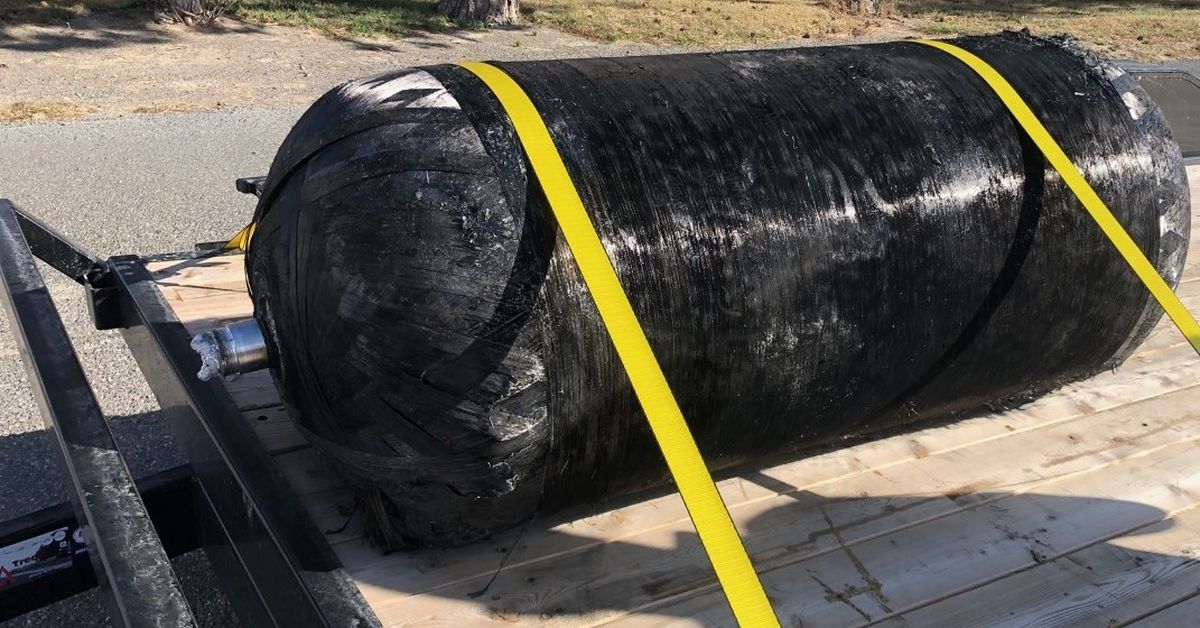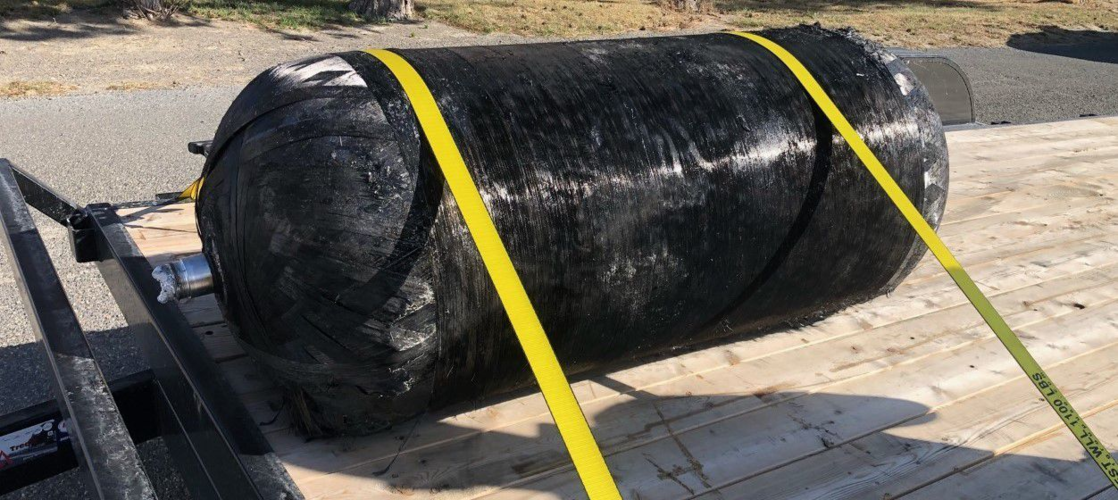You are using an out of date browser. It may not display this or other websites correctly.
You should upgrade or use an alternative browser.
You should upgrade or use an alternative browser.
SpaceX (general discussion)
- Thread starter FutureSpaceTourist
- Start date
- Joined
- 21 January 2015
- Messages
- 10,680
- Reaction score
- 12,332
Yeah sorry I shouldn’t have just assumed everyone would know what FTS meant. My bad.FTS : Flight Termination System. Boom goes the SN11... R.I.P, first generation of Starships. You didn't (all) died in vain.
Next generation awaited on the pad !
Their announcements are almost always unrealistically optimistic. But they do keep a quick schedule none the less. Does BN re-enter more or less the same as Falcon? If so, I suspect the testing will go more smoothly since the ship doesn’t have to rapidly change angle for the landing. That seems to cause a lot of headaches for the relite.
- Joined
- 13 August 2007
- Messages
- 7,148
- Reaction score
- 6,519
Sherman Tank
I don't want to change my personal text
- Joined
- 14 October 2016
- Messages
- 233
- Reaction score
- 200
I can't help but think that perhaps chucking a complex prototype rocket into the air every few weeks isn't the best way to do R&D.
Good post. Yes BN (hmmm... biscuit rocket) lands like Falcon 9, no flip.
Starship has to dive nose first because Mars atmosphere is a PITA and an evil female dog.
Worst of the Moon "needs propulsive braking"
Worst of Earth "an atmosphere just thick enough to burn if no heatshield"
but the same atmosphere also
"just thin enough not to brake a lot - so go crashing into the solid ground"
plus "half of Mars is 3 km higher"
Starship has to make that flip to horizontal to slam brutally into that thin atmosphere - that otherwise would not brake it but just still BURNS it.
In a sense, it brakes like a returning Shuttle orbiter - only there is no landing strip on Mars so it has to return to vertical to land on its tail.
Mars is so nasty...
Starship has to dive nose first because Mars atmosphere is a PITA and an evil female dog.
Worst of the Moon "needs propulsive braking"
Worst of Earth "an atmosphere just thick enough to burn if no heatshield"
but the same atmosphere also
"just thin enough not to brake a lot - so go crashing into the solid ground"
plus "half of Mars is 3 km higher"
Starship has to make that flip to horizontal to slam brutally into that thin atmosphere - that otherwise would not brake it but just still BURNS it.
In a sense, it brakes like a returning Shuttle orbiter - only there is no landing strip on Mars so it has to return to vertical to land on its tail.
Mars is so nasty...
Sherman Tank
I don't want to change my personal text
- Joined
- 14 October 2016
- Messages
- 233
- Reaction score
- 200
Honestly I think SpaceX ever flying a manned Mars mission is exceptionally optimistic. Not impossible, but I won't hold my breath either.
I’m skeptical the wet ware can take the trip and survive. I read an article just today that hearts shrink in low gravity (and also in marathon swimmers). But I think the hardware is only a matter of time. There’s lots of other uses for startship short of Mars.
tequilashooter
ACCESS: Top Secret
- Joined
- 1 January 2021
- Messages
- 699
- Reaction score
- 874
Just a huge check list for Musk to go through such as its questionable with the dates he is giving. Hell I wish I was Joe Rogan asking him a series of questions.
Feel free to correct me below.
Either way I am looking more forward to other space projects from NASA and Roscosmos such Perseverance Rove launching their drone in april 8, Nuklons travel across multiple celestial bodies, Venus projects, etc. I want a submarine type drone to be sent to a planet composed of liquid as another proposal, etc. Don't get me wrong but I do find it fun(in a non-mocking way) watching him make progress trying to get to Mars.
Feel free to correct me below.
- Demonstrate that they can send a 100-150 ton payload to Mars, which I suppose is the weight estimates of the starship. ITS tankers I have looked at (he proposes 5 for interplanetary mission) weigh 380 tonnes, interplanetary spaceship with cargo and passengers is estimated at 450 tonnes per trip to Mars. The only time I remember such heavy weight proposals was by the UR-900 to UR-700 rockets which have been cancelled by the Soviets. So if this does turn out successful than congrats for their company on setting new world records of heavy payload launches to space that surpass Saturn V, but a successful Mars mission is another story.
- Demonstrate that orbital refueling works which of course we have yet to see.
- I believe there are 4 tankers required for the Mars mission shown in the image I have looked at and they have to do some kind of maneuver with the starship which of course we have to see a demonstration that this works.
- Land I suppose a 100-150 ton object into Mars and NASA has had great difficulty trying to land at least a 1 ton rover. Space X has to demonstrate this.
- Musk has presented heat tiles with temperatures of 1560 kelvin in his tweet video regarding a re-entry profile, while Berkeley labs has said the re-entry heat load to Mars is 4000 degrees Fahrenheit. re-entry heat loads for earth are even higher. So is he making it sound like he is expecting that these tiles can survive the wear and tear of entering either Mars or earth without the whole crew dying?
- His stainless steel rocket design has criticism of its own because an atlas rocket crumpled from its own weight. The stainless steel he presented is 310S which corrodes at 2,000 degrees Fahrenheit and melts at 2,400 degrees Fahrenheit.
- Has presented a cooling method to blood rocket fuel from tiny holes of rocket ship. Microscopic pores however can be easily clogged especially entering Mars.
- He is going to use solar cells to power a plant to harness Martian subsurface ice, electrolyte it into H2 and O2, then liquefy and store it as rocket fuels. We have frozen water at our planets poles and to my knowledge, no-one makes rocket fuel this way or has even proposed that so that is another hurdle. So before he goes stakes the lives of his crew, I would recommend him demonstrating a group of people in astronaut suits doing this on earth and how long it takes to have the supposed required amount of fuel before leaving Mars atmosphere back to Earth.
- Russians have said a trip to Mars they would need a spaceship with several meters of lead or create some better radiation absorbing material that weighs less than lead. Space X has yet to demonstrate that, suits that can demonstrate that. Says 115 days to Mars on average, than once the crew lands I wonder how long it will take them to go mine in Mars before returning to earth with said amount of time.
- What is the cost of all of this? and what is the failure rate before making such an investment on Space X?
Either way I am looking more forward to other space projects from NASA and Roscosmos such Perseverance Rove launching their drone in april 8, Nuklons travel across multiple celestial bodies, Venus projects, etc. I want a submarine type drone to be sent to a planet composed of liquid as another proposal, etc. Don't get me wrong but I do find it fun(in a non-mocking way) watching him make progress trying to get to Mars.
- Joined
- 21 January 2015
- Messages
- 10,680
- Reaction score
- 12,332
It’s ridiculous to adopt this pessimistic stance with Space X at this early stage. SN11 was always likely to go bang as it was an outdated design using obsolete versions and refurbished Raptor engines. All Raptors below SN50 are outdated and SN11 only featured a small number of improvements over SN8 that’s why the examples after SN11 were scrapped.
Sherman Tank
I don't want to change my personal text
- Joined
- 14 October 2016
- Messages
- 233
- Reaction score
- 200
I don't think it's ridiculous to be pessimistic about SpaceX's extravagant claims precisely because they're in such an early stage of development. A manned Mars mission is the most technically complex undertaking in the history of the species, and until SpaceX can demonstrate they have every necessary bit of technology working flawlessly, the correct attitude is skepticism because a trillion and one things could derail the entire program between now and the hypothetical manned mission.
Dragon029
ACCESS: Top Secret
- Joined
- 17 March 2009
- Messages
- 882
- Reaction score
- 430
A few points:Just a huge check list for Musk to go through such as its questionable with the dates he is giving. Hell I wish I was Joe Rogan asking him a series of questions.
Feel free to correct me below.
After he gets the Space ship to leave orbit what percentage % in progress is he done in getting to Mars with a human crew?
- Demonstrate that they can send a 100-150 ton payload to Mars, which I suppose is the weight estimates of the starship. ITS tankers I have looked at (he proposes 5 for interplanetary mission) weigh 380 tonnes, interplanetary spaceship with cargo and passengers is estimated at 450 tonnes per trip to Mars. The only time I remember such heavy weight proposals was by the UR-900 to UR-700 rockets which have been cancelled by the Soviets. So if this does turn out successful than congrats for their company on setting new world records of heavy payload launches to space that surpass Saturn V, but a successful Mars mission is another story.
- Demonstrate that orbital refueling works which of course we have yet to see.
- I believe there are 4 tankers required for the Mars mission shown in the image I have looked at and they have to do some kind of maneuver with the starship which of course we have to see a demonstration that this works.
- Land I suppose a 100-150 ton object into Mars and NASA has had great difficulty trying to land at least a 1 ton rover. Space X has to demonstrate this.
- Musk has presented heat tiles with temperatures of 1560 kelvin in his tweet video regarding a re-entry profile, while Berkeley labs has said the re-entry heat load to Mars is 4000 degrees Fahrenheit. re-entry heat loads for earth are even higher. So is he making it sound like he is expecting that these tiles can survive the wear and tear of entering either Mars or earth without the whole crew dying?
- His stainless steel rocket design has criticism of its own because an atlas rocket crumpled from its own weight. The stainless steel he presented is 310S which corrodes at 2,000 degrees Fahrenheit and melts at 2,400 degrees Fahrenheit.
- Has presented a cooling method to blood rocket fuel from tiny holes of rocket ship. Microscopic pores however can be easily clogged especially entering Mars.
- He is going to use solar cells to power a plant to harness Martian subsurface ice, electrolyte it into H2 and O2, then liquefy and store it as rocket fuels. We have frozen water at our planets poles and to my knowledge, no-one makes rocket fuel this way or has even proposed that so that is another hurdle. So before he goes stakes the lives of his crew, I would recommend him demonstrating a group of people in astronaut suits doing this on earth and how long it takes to have the supposed required amount of fuel before leaving Mars atmosphere back to Earth.
- Russians have said a trip to Mars they would need a spaceship with several meters of lead or create some better radiation absorbing material that weighs less than lead. Space X has yet to demonstrate that, suits that can demonstrate that. Says 115 days to Mars on average, than once the crew lands I wonder how long it will take them to go mine in Mars before returning to earth with said amount of time.
- What is the cost of all of this? and what is the failure rate before making such an investment on Space X?
1. Starship is 100-120 tonnes; the payload is an additional ~100 tonnes; so long as the payload is secured properly this shouldn't present too much of an issue. The vehicle certainly has more than enough thrust to launch and land with that kind of payload.
2. True for cryogenic propellants, though there's been successful demonstrations in the past of transferring liquids between spacecraft; the only fundamental difference is that you just have to be more careful about valves seizing with cryogenics. Either way we'll hopefully see them demonstrate this next year.
3. Something like that; it'll depend on what optimisations they make for tankers, what payloads they intend to deliver to Mars, how much weight they can cut from Starship, etc. Refuelling should be fairly simple; it's just docking with quick-disconnects.
4. To some extent that's what they're doing now; the timing of manoeuvres and length of burns will be different, but the landing process is the same on both Mars and Earth.
5. The tiles are based on TUFROC which has been demonstrated to handle Earth re-entry very well via the X-37B and sample tiles on Dragon capsules. Heat loads for Mars will definitely get hotter than re-entering from LEO, but the temperatures that tiles reach is highly variable depending on the aerocapture and/or re-entry profile.
6. Earlier Starships were built from 301, not 310; current prototypes are using 304L and they're moving towards (or may already be using on prototypes being built today) proprietary 30X alloys optimised for the job. Crumpling is also purely a matter of structural design, not the material - yes aluminium-lithium, etc alloys can be lighter and therefore thicker / more reinforced, reducing the chance of buckling, but that doesn't work at the re-entry temperatures that Starship needs to survive.
7. Transpiration cooling might possibly be used in select areas, but they don't plan on using it if they don't have to. The specific areas where it might be needed (flap hinges) are ones where any pores don't need to be tiny either, because you can simply spray liquid methane from a more conventional nozzle to wet the internal-facing hinge surface.
8. They're using the Sabatier reaction to produce CH4 and LOX from atmospheric CO2 and mined ice; it's a reaction that was first demonstrated >100 years ago and is well understood today. The only reason we don't use it on Earth is because it's energy intensive and therefore uneconomical when CH4 can instead just be obtained from natural gas deposits and LOX can just be produced via condensing / liquifying atmospheric O2 (SpaceX is actually constructing an O2 production plant right next to their Boca Chica construction yard right now). On Mars there's no real alternative than using the Sabatier reaction, so the plan is to simply deploy a massive solar panel farm to power it, get some atmospheric compressors running and (the most challenging part) mine some ice for providing the hydrogen for the process (a short-term alternative is delivering just pure hydrogen on some Starships, or delivering an excess of water [which might be a good idea for life-support regardless in case a water shipment or two from Earth fails to land]).
9. For the majority (or potentially entirety) of the transit you won't need anything close to metres of lead. For solar radiation Starship can keep its tail pointed to the sun, putting propellant and several angled layers of steel between the crew and space. For cosmic radiation it's actually better to have shields made out of lighter elements, so things like HDPE, lithium metal hydrides, water (potable and/or grey being stored and cycled through the life support system) can be used to protect the cabin and a purpose-made radiation bunker for any major radiation events.
For stays on Mars itself the general intent is to use Martian regolith (either via homes dug underground, or potentially by using nearby ex-volcanic tubes and caves) to protect colonists from radiation, with the Starship they rode in on being a temporary home.
10. Starships themselves are quite cheap; Raptor engines are in the ballpark of just $1m each, stainless steel is cheap and in many ways easier to work with than carbon composites or aluminium alloys (TIG welding plasma-cut and folded sheet steel rather than trying to mill out giant slabs of aluminium, press them into shape and then friction-stir weld). I've previously estimated that in terms of engines, avionics, steel and labor they're only paying something like $10m per vehicle; there'll be extra money involved for tooling and equipment hire, even more if you include things like land-purchases, facility construction costs, off-site R&D, etc, but either way this is no SLS. Starship is also an investment by SpaceX into creating a full reusable launch vehicle that theoretically should be cheaper per launch than Falcon 9 while having a significantly larger payload capacity. This not only helps with the general launch market, but it allows SpaceX to launch Starlink satellites for significantly less. Starlink in turn is intended to fund Starship's continued development and Martian colonisation projects. Then finally, Elon himself sees Starship and Mars colonisation as his primary pet projects, and as such, has previously stated that he's gathering wealth (via his shares in Tesla, etc) in order to help personally fund a colonisation effort.
Elon's timelines are almost always unrealistically optimistic, but I do think we'll see an orbital launch this year so long as there isn't a major problem like the orbital launch pad (under construction) blowing up, or the integration tower (required to stack Starship onto SuperHeavy) being destroyed (or constructed far slower than expected). Then once they're getting Starships into orbit they'll want to immediately start using it for Starlink launches. Between those, they'll want to also test orbital refuelling ASAP next year as its critical to Starship's architecture and any potential NASA Artemis HLS contracts. SpaceX also wants to launch dearMoon in 2023 which would potentially be Starship's first manned mission and the first commercial space mission beyond LEO; for that they need to prototype and test a crewed variant of Starship, including an unmanned trip around the Moon to test extra high-speed re-entry and how things like the ambitious panoramic window holds up under the varied loads and temperatures. I expect dearMoon to get delayed to something like 2025, but we'll just have to wait and see. In 2022 and 2024 I also expect SpaceX to launch (assuming in-orbit refuelling is demonstrated) some unmanned Starships to Mars, primarily to gather test data, but also potentially to deliver cheap but useful payloads like water. There's potential then for a manned launch in 2027, but even if it gets delayed to after 2030 it'll be far ahead of the timeline where NASA would have the funding to get us there.
- Joined
- 13 August 2007
- Messages
- 7,148
- Reaction score
- 6,519
The Atlas rocket tanks were steel balloons, build from 0,25 mm stainless steel stripes (later 1 mm thickness in later version)His stainless steel rocket design has criticism of its own because an atlas rocket crumpled from its own weight. The stainless steel he presented is 310S which corrodes at 2,000 degrees Fahrenheit and melts at 2,400 degrees Fahrenheit.
The tanks needed helium pressure at 1.43 bar during storage transport and installation on launch pad
Starship is build from 4 mm (now 3 mm) thick 304L steel and is self-supporting, it not need Helium pressure !
why Steel ? it cheap !
Original planned was to build from composite material with $380 per kg, cost 304L $0,38 per kg, 38 cent !
here is video about Atlas ICBM jump to 7:30 for production part, that has resemblance to startship production
Musk has presented heat tiles with temperatures of 1560 kelvin in his tweet video regarding a re-entry profile, while Berkeley labs has said the re-entry heat load to Mars is 4000 degrees Fahrenheit. re-entry heat loads for earth are even higher. So is he making it sound like he is expecting that these tiles can survive the wear and tear of entering either Mars or earth without the whole crew dying?
Heat load on re-entry is not fixed, it depends on trajectory. Part of the design for SS is that it's supposed to use negative lift once it enters atmosphere to stay high without exiting. This allows it to reduce peak heating to manageable levels.
- Joined
- 21 January 2015
- Messages
- 10,680
- Reaction score
- 12,332
View: https://twitter.com/elonmusk/status/1377020678453485573
Barely a scratch.
Back on the stand soon!
Will report conclusions as soon as we know them.
- Joined
- 21 January 2015
- Messages
- 10,680
- Reaction score
- 12,332
- Joined
- 3 June 2011
- Messages
- 17,332
- Reaction score
- 9,067
Much, MUCH simpler than Starship. Plumbing-wise more complicated but otherwise it's just a big Falcon 9 1st stage.A little hasty there, or is that just me?
- Joined
- 13 August 2007
- Messages
- 7,148
- Reaction score
- 6,519
Computer simulation what could went wrong
either Flight Termination system or one of Raptors explode
View: https://twitter.com/nickhenning3d/status/1377312529936867331
either Flight Termination system or one of Raptors explode
View: https://twitter.com/nickhenning3d/status/1377312529936867331
- Joined
- 21 January 2015
- Messages
- 10,680
- Reaction score
- 12,332
The kind gentleman from ULA who did the Atlas V orientation for all the new space launch program office officers referred to them as the "Beer can Atlases", that's what's always stuck in my mind.The Atlas rocket tanks were steel balloons, build from 0,25 mm stainless steel stripes (later 1 mm thickness in later version)
The tanks needed helium pressure at 1.43 bar during storage transport and installation on launch pad
Starship is build from 4 mm (now 3 mm) thick 304L steel and is self-supporting, it not need Helium pressure !
why Steel ? it cheap !
Original planned was to build from composite material with $380 per kg, cost 304L $0,38 per kg, 38 cent !
- Joined
- 13 August 2007
- Messages
- 7,148
- Reaction score
- 6,519
RGV overview of Debri field
View: https://www.youtube.com/watch?v=CPHh3NPgLEw
On Twitter the first CancelCultureEnvironmentalist
Demand that SN test are immediately terminated because it endanger local Wildlife
I sarcastically comment them that regular Rocket explosion keep the illegal hunters away...
to cheer you up
Gigafactory Texas progress report
View: https://www.youtube.com/watch?v=df0LH7j9VdA
On Twitter the first CancelCultureEnvironmentalist
Demand that SN test are immediately terminated because it endanger local Wildlife
I sarcastically comment them that regular Rocket explosion keep the illegal hunters away...
to cheer you up
Gigafactory Texas progress report
- Joined
- 13 August 2007
- Messages
- 7,148
- Reaction score
- 6,519
news from Boca Chica
The Mystery about blunt Nose cone increase
it was lower in that new structure they build on site, now they installed new type of hinges on it.
Musk very quiet about this!
next to that arrived a new Crane "Liebherr LR1300" that lifts 300 metric tons
and SN15 moved into Highbay waiting on his nosecone, question witch one ?
View: https://www.youtube.com/watch?v=W3tRDCTa4kM
The Mystery about blunt Nose cone increase
it was lower in that new structure they build on site, now they installed new type of hinges on it.
Musk very quiet about this!
next to that arrived a new Crane "Liebherr LR1300" that lifts 300 metric tons
and SN15 moved into Highbay waiting on his nosecone, question witch one ?
- Joined
- 9 October 2009
- Messages
- 19,965
- Reaction score
- 10,457
Austin sold to Musk with Mayoral approval:

 www.austinchronicle.com
www.austinchronicle.com

Elon Musk Purchases All of Austin, Dubs Himself Iron Mayor
Abbott seals the deal with new ruler
Ha, Ha, @TomcatViP, although, really given the other non April's fool day news this week he really bought Brownsville...Austin sold to Musk with Mayoral approval:

Elon Musk Purchases All of Austin, Dubs Himself Iron Mayor
Abbott seals the deal with new rulerwww.austinchronicle.com
- Joined
- 9 October 2009
- Messages
- 19,965
- Reaction score
- 10,457
A slight exaggeration:

 www.businessinsider.com
www.businessinsider.com
Elon Musk takes Texas city by surprise by tweeting he’s going to donate $30 million to boost the area
The mayor of Brownsville said Elon Musk's $30 million donation came as a surprise and that the city hasn't yet spoken to him about the details.
- Joined
- 9 October 2009
- Messages
- 19,965
- Reaction score
- 10,457

Elon Musk says he's going to put Dogecoin on 'the literal moon'
SpaceX CEO Elon Musk tweeted on Thursday (April 1) he would put "a literal Dogecoin" on the "literal moon."
The French magazine Auto Plus got an April fish saying Musk, now with 200 billion dollars, was actively buying... every single large car maker in the world (USA, Asia, Europe) to make room for, and strengthen Tesla. For good measure he added he wanted to send Carlos Tavares (boss of Peugeot and whatever conglomerate it presently belongs to) on a trip to the Moon.
Falcon 9's 400bar composite helium Tank landed in Washington state as one piece and is being recovered.


 www.theverge.com
www.theverge.com


SpaceX rocket debris lands on man’s farm in Washington
A pressure vessel fell from the sky and landed in a farm
- Joined
- 21 January 2015
- Messages
- 10,680
- Reaction score
- 12,332
Final Crew Members Named for World’s First All-Civilian Mission to Space
https://www.businesswire.com/news/h...ew-Members-Named-World’s-All-Civilian-Mission
https://www.businesswire.com/news/h...ew-Members-Named-World’s-All-Civilian-Mission
- Joined
- 9 October 2009
- Messages
- 19,965
- Reaction score
- 10,457

Piece of SpaceX rocket debris lands at Washington state farm
A piece of burning rocket debris seen streaking across the Pacific Northwest sky last week crashed on a farm in eastern Washington state, authorities said.
- Joined
- 9 October 2009
- Messages
- 19,965
- Reaction score
- 10,457
- Joined
- 2 January 2006
- Messages
- 3,524
- Reaction score
- 3,121
- Joined
- 9 October 2009
- Messages
- 19,965
- Reaction score
- 10,457
Rhinocrates
ACCESS: Top Secret
- Joined
- 26 September 2006
- Messages
- 2,112
- Reaction score
- 4,509
Santa is in a bad mood and it's only Easter.View attachment 654433
(Unfortunately, I don't know the original source for the piece of great artwork above)
- Joined
- 4 July 2010
- Messages
- 2,228
- Reaction score
- 2,136
I think there's a case to be made against some aspects of their approach, but nothing they're doing strikes me as insane. It's an unusual approach which plays out very publicly, but there’s plenty of logic behind it.They are churning them out just to be blown up like heretics thrown in the pyre during the Middle Ages...
Did they lost faith in sane engineering?
@Moose :
I might get frustrated watching such waste of capital but I would think that logic would dictate to go back to small scale demonstrator: If the belly flop pause problem with the fuel, pump and engines, there is nothing that would be done at a smaller scale that wouldn't represent what is happening for real.
Similitudes and flows mechanics (the art of scaling down a process that would still be representative) is not sciences fictions. It has been bread and butter for aerospace since the Wright Brothers and even the Naca.
It won't prevent them to run in parallel their test for re-entry and still opening their flight domain (having an explosion diminish in effect the span of knowledge gained per flight).
My 2 cents only.
I might get frustrated watching such waste of capital but I would think that logic would dictate to go back to small scale demonstrator: If the belly flop pause problem with the fuel, pump and engines, there is nothing that would be done at a smaller scale that wouldn't represent what is happening for real.
Similitudes and flows mechanics (the art of scaling down a process that would still be representative) is not sciences fictions. It has been bread and butter for aerospace since the Wright Brothers and even the Naca.
It won't prevent them to run in parallel their test for re-entry and still opening their flight domain (having an explosion diminish in effect the span of knowledge gained per flight).
My 2 cents only.
Similar threads
-
-
-
-
McDonnell Model 66 Air to Air Missile
- Started by Bill S
- Replies: 34
-
Spirit of Liberty/Altaris space tourism RLVs
- Started by FutureSpaceTourist
- Replies: 27

